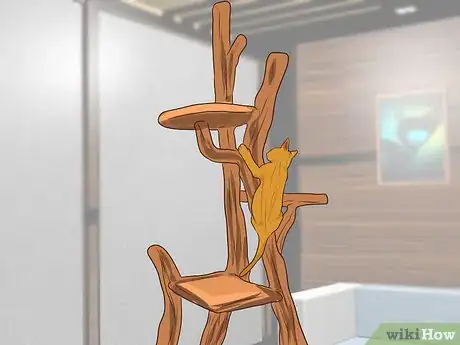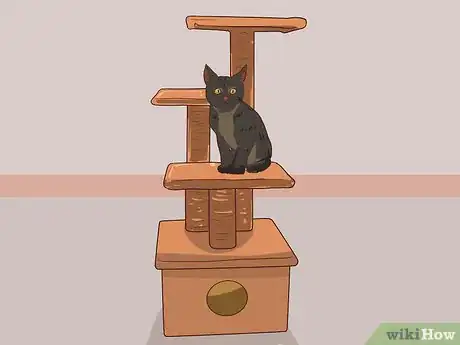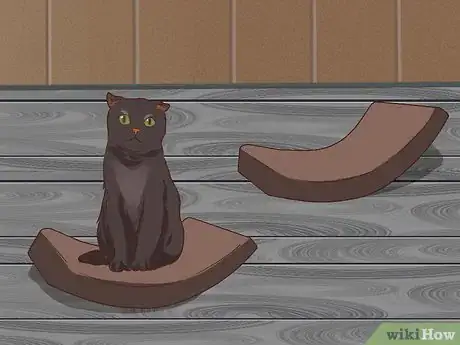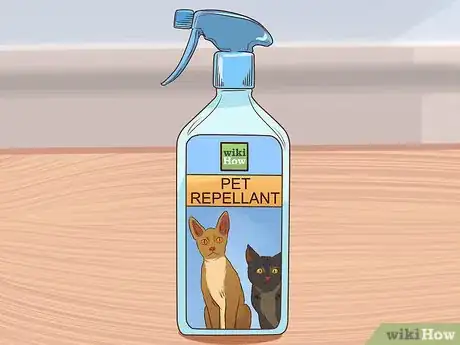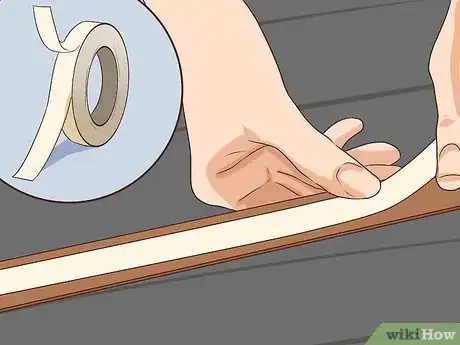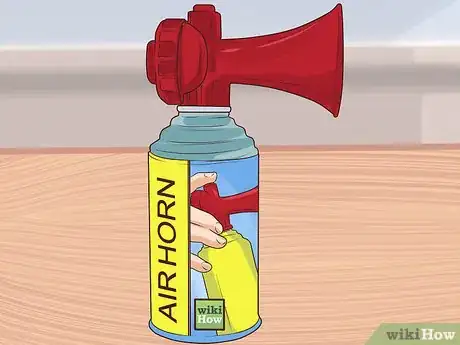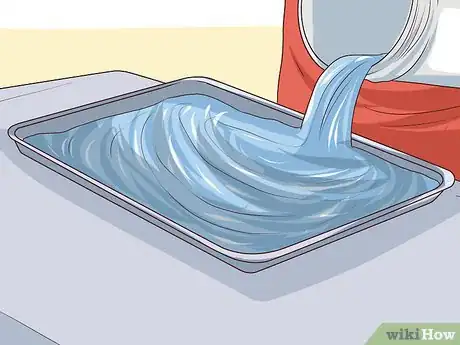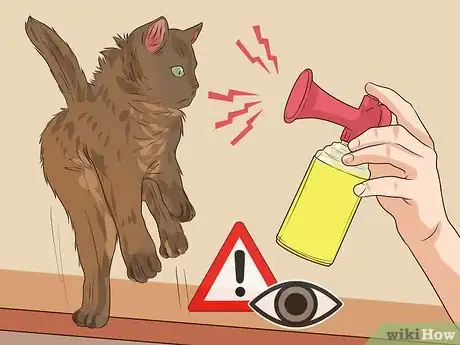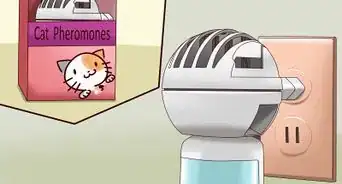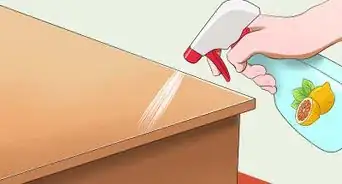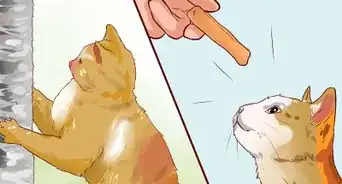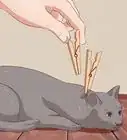This article was co-authored by Russell Hartstein, CDBC, CPDT. Russell Hartstein is a Certified Dog & Cat Trainer and CEO of Fun Paw Care in Los Angeles, California. With over 25 years of training, nutrition, boarding, and daycare experience, Russell and the Fun Paw Care team provide the most current, humane, and science-based methods utilizing force-free positive reinforcement to train and care for pets. Russell is an author for PetMD, Chewy, and Dogster. He is also regularly cited in publications from various organizations, including The New York Times, The Wall Street Journal, and the American Veterinary Medical Association (AVMA). He is a Certified Dog Behavior Consultant with the International Association of Animal Behavior Consultants and a Certified Pet Dog Trainer. He received his bachelor’s degree in History and Economics from Binghamton University.
There are 7 references cited in this article, which can be found at the bottom of the page.
This article has been viewed 23,353 times.
Cats are natural jumpers and climbers, so jumping onto high surfaces is a normal behavior for cats. However, sometimes they jump and climb on surfaces you don’t want them on, such as kitchen counters. To help keep your cat off unwanted surfaces, provide them with appropriate cat furniture that lets them climb and jump safely. You can also try to deter them from high places by making the surfaces unpleasant and using noise traps.
Steps
Providing Alternative Vertical Spaces
-
1Provide indoor cat trees. Cats like to be up high, so jumping onto high surfaces is normal. Providing safe options for your cat can be the best solution. Cat trees are a type of vertical cat furniture that gives the cat a safe and cat-specific outlet for climbing. Cat trees have carpeting, platforms for sleeping, and different levels for the cat to jump and climb on. They can be simple or very elaborate.[1]
- A cat tree can keep your kitten off high surfaces you don’t want them to climb on. Cat trees provide an outlet for your cat to climb.
- Place the cat tree by the window so that your cat can watch the world outside.
-
2Try a kitty condo. Kitty condos are another type of cat furniture that may help keep your kitten off high surfaces. Kitty condos are similar to cat trees, but they are much more elaborate. They include enclosed spaces for your cat to hide and sleep.[2]
- Kitty condos also have vertical shelves and platforms for your cat to climb and jump on. This gives them places to perch and sleep.
Advertisement -
3Consider providing kitty shelves. Cat shelves give your cat places to climb and jump that are safe and set up just for your cat. This may deter them from climbing on high surfaces in your home where you don’t want them.[3]
- You can set up cat shelves on a wall, on a windowsill, or over doorways. This gives your cat somewhere to climb, sleep, and watch the rest of the house.
Considering the Underlying Problem
-
1Provide toys to occupy your kitten. Your kitten may not want to jump onto high places if you give them something to entertain them on the floor. Cat toys can help kittens expend their energy, so they may have less energy to jump onto high surfaces. Play with your cat for 10 minutes every day to help with this.[4]
- Cat toys can also help your cat stay interested in playing, so they’re not as interested in jumping.
- Give your cat a variety of toys. Try fake mice, boxes, empty bags, laser pointers, or dangling objects for them to swat and chase.
-
2Provide plenty of food for your cat. Kittens may jump on tables or counters if they associate these higher surfaces with food. They jump on them to look for food. To help discourage this behavior, feed your cat enough food throughout the day, though even a small cat that has just eaten may still try to steal food from the countertop. Make sure you are feeding your cat on the floor and never on the counters.[5]
- Feed your cat multiple small meals throughout the day.
- If your cat isn’t overweight, consider leaving dry food out that the cat can eat throughout the day when they want.
- Keep human food off the counters and tables, so your cat won’t be tempted to jump for a treat.
-
3Talk to your veterinarian. If none of these suggestions work, consider talking to your vet. Your vet can advise you on how to deal with cat behavioral problems and determine if there are any underlying issues with your cat.
Discouraging Your Cat From Jumping
-
1Try a pet repellent. Cat repellent sprays and diffusers can be used in your home to keep kittens away from high places where you don’t want them jumping. Cat sprays can be sprayed on curtains, furniture, and other surfaces to keep kittens away.[6]
- Diffusers can be plugged into the wall near areas your kitten is most likely to jump. The diffuser releases an aroma within a certain radius that will deter your cat from jumping or engaging in other bad behavior.
- You can buy these products at pet stores or online.
- You can try making your own repellent with lemon oil or lemon juice. Cats don't like lemon so that may repel them.
-
2Provide uncomfortable surfaces. Cats don’t like sticky or uncomfortable places to walk. To help deter your cats, make the surface undesirable. Place double-sided tape on the edge of counters, tables, or other high surfaces you don’t want your kitten jumping on. Cats don’t like sticky things on their paws, so they will not want to jump again.[7]
- Try placing aluminum foil on surfaces you don’t want your cat to jump on. This will startle them and deter them from jumping again.
- You can also place plastic carpet liners with the bumpy side up. The cat won’t like the way the small protruding bumps feel on their paws.
-
3Use remote correction methods. Remote correction methods help reduce unwanted behavior when you are not around. They include motion-activated sprays or buzzers near areas where your cat jumps onto high surfaces.[8]
- This helps the cat not associate the punishment with you while giving the behavior unwanted associations.
-
4Create noise punishments yourself. Though you don’t want your cat to associate you with punishment, you can still deter them from jumping onto high places. When you see your cat jumping onto a high place or about to do it, you can hide out of sight and make an unpleasant noise that will scare your cat and let them associate the behavior with the unpleasant, stressful noise.
- For example, you can use a whistle when they jump onto a surface. It will startle the cat and cause them stress.
- You can make a shaker out of a can and rocks or coins. Whenever the cat jumps, shake the can to startle the cat.
-
5Make noise traps. If you don’t want to buy commercial repellents or remote correction methods, you can make your own. These methods provide a startling experience for your cat so that they will be discouraged from jumping.[9]
- For example, you can place cookie sheets on the edge of the counter. Your cat will jump on the counter, land on the cookie sheet, and be startled by the noise when the sheet falls to the floor. You may also place water on the cookie sheet, which will deter your cat.
- Try a can trap. Fill a can with coins or rocks and connect it to a string. Place the can and string in an area where the cat will knock over the can when they jump onto the high surface.
-
6Use caution with punishment techniques. Cats don’t always respond well to punishment. Cats may become stressed instead of changing their behavior. If you have multiple cats, you may make a different cat think they are doing something wrong, like using the litter box or playing, if the noise trap goes off while they are doing the activity. Try other methods before using punishment.[10]
- Be especially careful if you are using a shaker can or air horn yourself. You never want your cat to see you.
Expert Q&A
-
QuestionWhy can't I keep my kitten off the counter?
 Russell Hartstein, CDBC, CPDTRussell Hartstein is a Certified Dog & Cat Trainer and CEO of Fun Paw Care in Los Angeles, California. With over 25 years of training, nutrition, boarding, and daycare experience, Russell and the Fun Paw Care team provide the most current, humane, and science-based methods utilizing force-free positive reinforcement to train and care for pets. Russell is an author for PetMD, Chewy, and Dogster. He is also regularly cited in publications from various organizations, including The New York Times, The Wall Street Journal, and the American Veterinary Medical Association (AVMA). He is a Certified Dog Behavior Consultant with the International Association of Animal Behavior Consultants and a Certified Pet Dog Trainer. He received his bachelor’s degree in History and Economics from Binghamton University.
Russell Hartstein, CDBC, CPDTRussell Hartstein is a Certified Dog & Cat Trainer and CEO of Fun Paw Care in Los Angeles, California. With over 25 years of training, nutrition, boarding, and daycare experience, Russell and the Fun Paw Care team provide the most current, humane, and science-based methods utilizing force-free positive reinforcement to train and care for pets. Russell is an author for PetMD, Chewy, and Dogster. He is also regularly cited in publications from various organizations, including The New York Times, The Wall Street Journal, and the American Veterinary Medical Association (AVMA). He is a Certified Dog Behavior Consultant with the International Association of Animal Behavior Consultants and a Certified Pet Dog Trainer. He received his bachelor’s degree in History and Economics from Binghamton University.
Certified Dog & Cat Trainer You might be keeping food on your counter. It helps to store your food in a different place, as well as giving your kitten toys and interactive devices (like food-dispensing toys) to help keep them mentally engaged and enriched throughout the day. This is especially true if they're not outdoor cats—you really have to work to find ways to enrich your cat, and food-dispensing toys are very helpful since they give your cat nutrition as well as an opportunity to practice their hunting and stalking skills.
You might be keeping food on your counter. It helps to store your food in a different place, as well as giving your kitten toys and interactive devices (like food-dispensing toys) to help keep them mentally engaged and enriched throughout the day. This is especially true if they're not outdoor cats—you really have to work to find ways to enrich your cat, and food-dispensing toys are very helpful since they give your cat nutrition as well as an opportunity to practice their hunting and stalking skills.
Expert Interview

Thanks for reading our article! If you'd like to learn more about cat training, check out our in-depth interview with Russell Hartstein, CDBC, CPDT.
References
- ↑ http://pets.webmd.com/cats/guide/keeping-cat-countertops-tables
- ↑ http://www.vetstreet.com/dr-marty-becker/how-can-i-keep-my-cat-off-kitchen-counters
- ↑ http://www.catster.com/lifestyle/cat-behavior-furniture-tips-climbing-high-places-vertical
- ↑ http://www.humanesociety.org/animals/cats/tips/cat_toys.html
- ↑ http://pets.webmd.com/cats/guide/keeping-cat-countertops-tables
- ↑ http://www.vetstreet.com/dr-marty-becker/how-can-i-keep-my-cat-off-kitchen-counters
- ↑ http://www.thecatsite.com/a/get-off-how-to-discourage-your-cat-from-jumping-on-counters
- ↑ http://www.drsfostersmith.com/pic/article.cfm?aid=918
- ↑ http://www.vetstreet.com/dr-marty-becker/how-can-i-keep-my-cat-off-kitchen-counters
About This Article
To stop a kitten from jumping onto high places, give your cat safe options for being up high like an indoor cat tree, kitty condo, or kitty shelves. If your cat is jumping onto things in search of food, make sure you’re feeding it multiple small meals from the floor rather than the countertop throughout the day. You may also want to try using a cat repellent spray or diffuser to keep your kitten away from high places they shouldn’t be jumping on. For more help from our Veterinary co-author, including how to make a surface sticky or uncomfortable to deter your cat from jumping onto it, read on!
